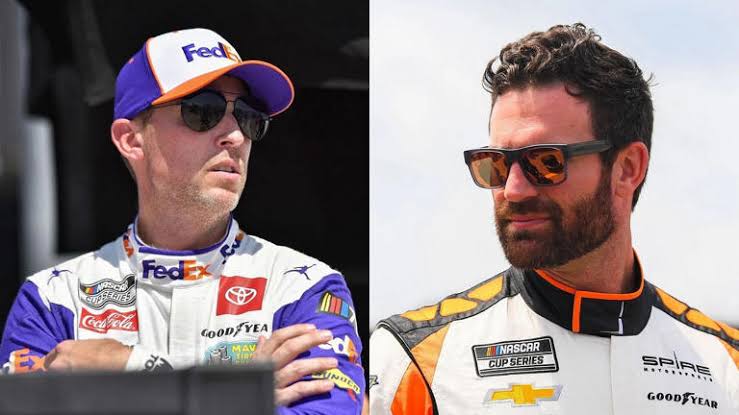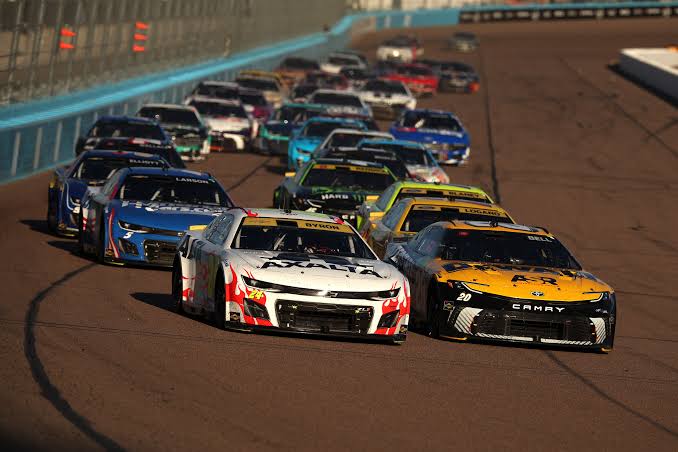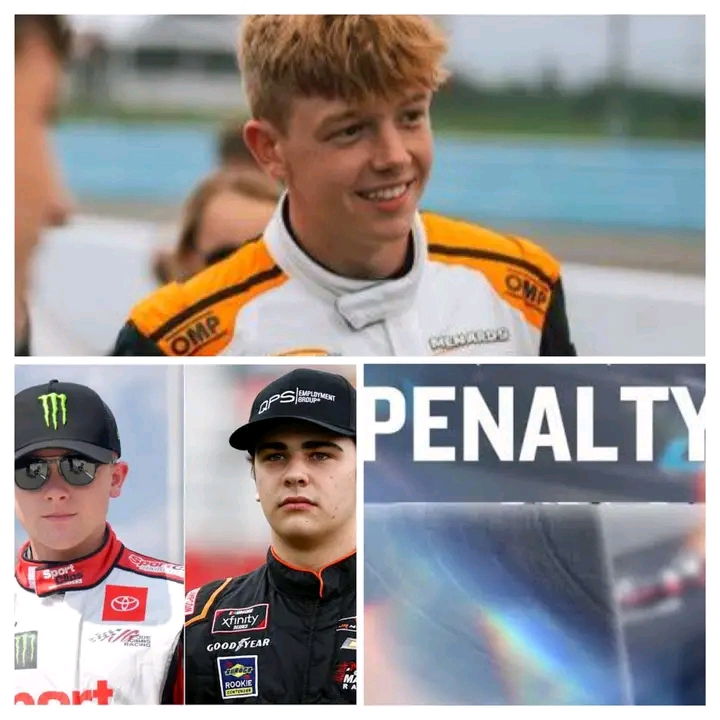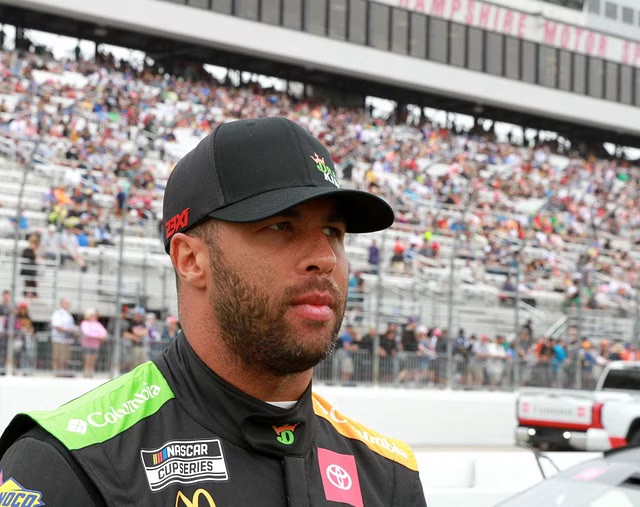The NASCAR Cup Series race at Watkins Glen took a dramatic turn early on when a collision involving multiple cars sent shockwaves through the field. Veteran driver Denny Hamlin didn’t mince words in assigning blame. Following the race, Hamlin pointed the finger squarely at Corey LaJoie, accusing him of triggering the crash that marred the opening laps and impacted several drivers.
The incident unfolded just moments after the green flag dropped, with cars jostling for position on the challenging road course. Hamlin, known for his candor and competitive spirit, was quick to share his frustration with LaJoie’s actions, sparking a wave of discussion among fans and fellow drivers alike.
The opening laps at Watkins Glen are always a high-stakes affair, with drivers jockeying for position as they navigate the tight turns and elevation changes of the historic track. However, in this case, things escalated quickly when Corey LaJoie’s aggressive move in the midfield seemed to spark a chain reaction. Several cars were collected in the chaos, including Hamlin’s, forcing him to take evasive action to avoid significant damage.
“I don’t know what he was thinking,” Hamlin said in a post-race interview, visibly frustrated. “We’re all trying to get through those first laps cleanly, and LaJoie just went in too hard and wrecked half the field.”
While crashes in NASCAR are far from rare, the timing and positioning of this particular incident had significant consequences for several drivers, setting the tone for what would become a challenging day on the track. For Hamlin, the crash meant he had to claw his way back into the race, with the early damage putting him at a disadvantage.
The nature of the Watkins Glen road course often makes for intense and tight racing, especially in the early stages when every driver is looking to secure their position. Drivers are well aware of the risks associated with these tight corners and elevation changes, but the expectation is that everyone will exercise caution, particularly in the opening laps when the field is still bunched up. LaJoie’s actions, as Hamlin described them, went against that unspoken agreement to get through the initial laps cleanly and without incident.
Hamlin’s post-race comments were blunt, leaving little room for interpretation. He clearly felt that LaJoie’s actions were reckless, and his public call-out underscored just how much the crash impacted not only his race but also the races of many others.
“It’s just frustrating,” Hamlin continued. “We all know how tough Watkins Glen is. You’ve got to be smart out there, and what LaJoie did was the opposite of smart. It’s disappointing when a move like that affects so many of us.”
The outburst wasn’t entirely unexpected. Hamlin is known for speaking his mind, especially when he feels that another driver’s actions have crossed the line. His rivalry with other drivers, like Joey Logano and Ross Chastain, has shown that Hamlin isn’t one to back down from calling out what he views as reckless behavior on the track.
In LaJoie’s case, this wasn’t the first time he’s been involved in an incident early in a race. Some fans and analysts have noted that LaJoie’s aggressive style, while exciting, often leads to unnecessary risks, especially in high-pressure situations. Whether this particular crash will change his approach in future races remains to be seen, but the public nature of Hamlin’s comments suggests that LaJoie may face increased scrutiny from both fans and fellow drivers.
LaJoie, meanwhile, took a more measured approach when asked about the crash. While he didn’t directly address Hamlin’s comments, he did acknowledge the complexity of the situation and the difficulty of racing at Watkins Glen.
“Yeah, it was a tough start for sure,” LaJoie said. “We were all trying to gain spots, and things just got tight. It wasn’t intentional, but in this sport, things happen fast, and sometimes they don’t go your way.”
While LaJoie didn’t outright apologize, his response suggested that he viewed the crash as part of the unpredictability of NASCAR, rather than a deliberate mistake. Still, Hamlin’s pointed remarks have ensured that the incident will be a hot topic of conversation in the coming days.
For NASCAR drivers, incidents like these are part of the challenge. Road courses like Watkins Glen are particularly unforgiving, with little room for error and even less space for drivers to recover from a bad move. Hamlin’s frustration is understandable, especially given his desire to remain competitive in the race. But for LaJoie, incidents like these are seen as part of the high-stakes nature of NASCAR, where risks sometimes yield big rewards, and at other times result in significant consequences.
Hamlin’s public call-out of LaJoie quickly spread through the NASCAR fanbase, with many fans taking sides on social media. Some agreed with Hamlin, arguing that LaJoie’s aggressive move was unnecessary so early in the race. Others defended LaJoie, pointing out that early-race incidents are a common part of NASCAR, and that Hamlin’s frustration was understandable but perhaps overstated.
The debate speaks to the broader dynamics within NASCAR, where drivers are constantly navigating the fine line between aggression and recklessness. For fans of the sport, moments like these add to the drama and excitement, with rivalries and heated exchanges often taking center stage.
As the dust settles from the Watkins Glen crash, it remains to be seen whether Hamlin and LaJoie will have further words, or whether this incident will linger in the minds of the drivers as they head into the next race. NASCAR’s tight-knit racing community means that rivalries often spill over from one race to the next, and there’s a possibility that Hamlin’s frustration with LaJoie could resurface in future events.
For now, though, the crash at Watkins Glen has reignited discussions about driver responsibility and the fine margins that separate a successful race from one derailed by an early incident. While LaJoie will likely move on from the incident without much fuss, Hamlin’s sharp words have undoubtedly added a new layer of tension to the NASCAR season.
Denny Hamlin’s decision to publicly call out Corey LaJoie for the crash at Watkins Glen highlights the passion and intensity that drives NASCAR’s top competitors. While crashes are a part of the sport, the fallout from this incident underscores how a single moment on the track can have ripple effects for drivers and fans alike. As NASCAR continues, the rivalry between these two drivers will be one to watch closely, adding yet another chapter to the ever-evolving storylines of the Cup Series.
Denny Hamlin Publicly Calls Out Corey LaJoie for Triggering NASCAR Crash at Watkins Glen




